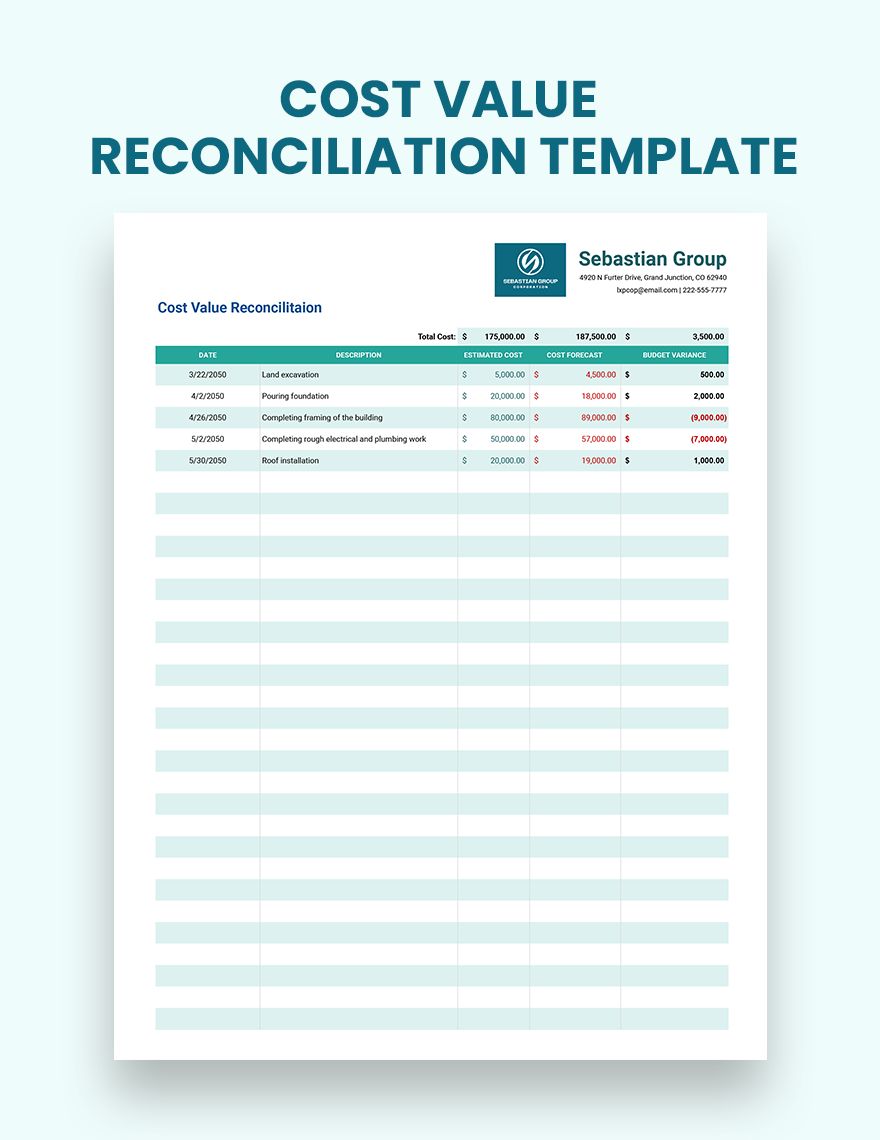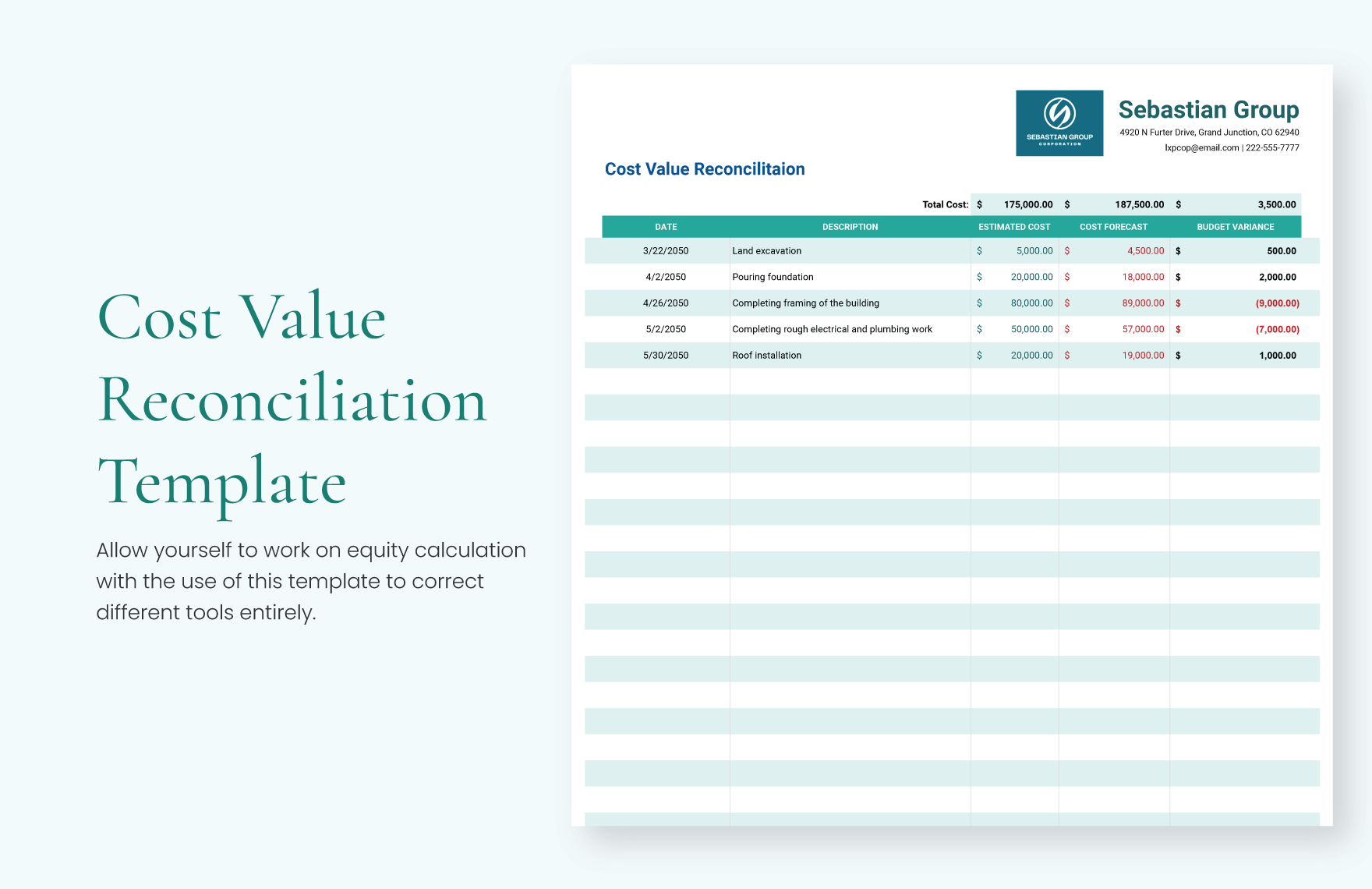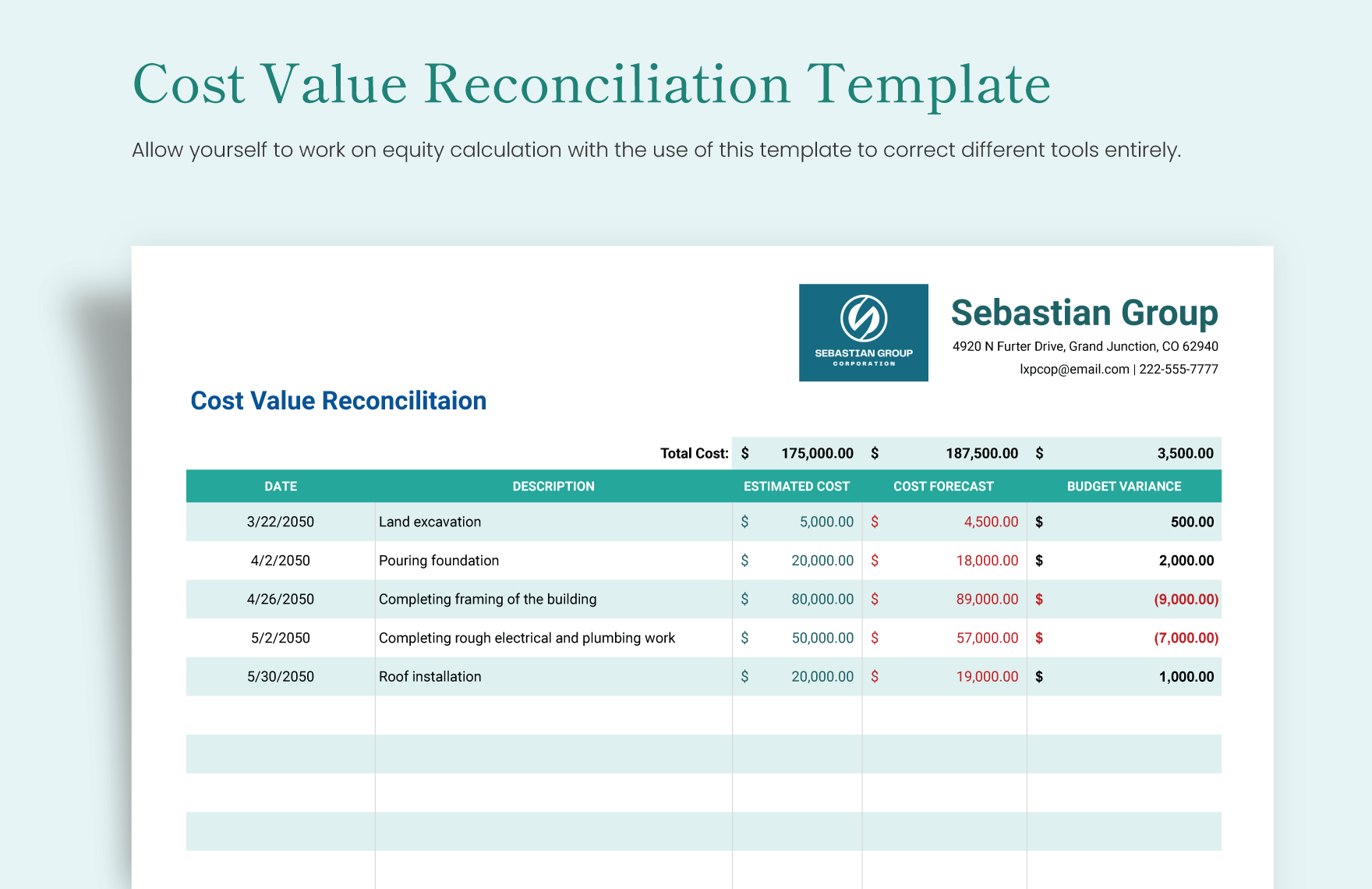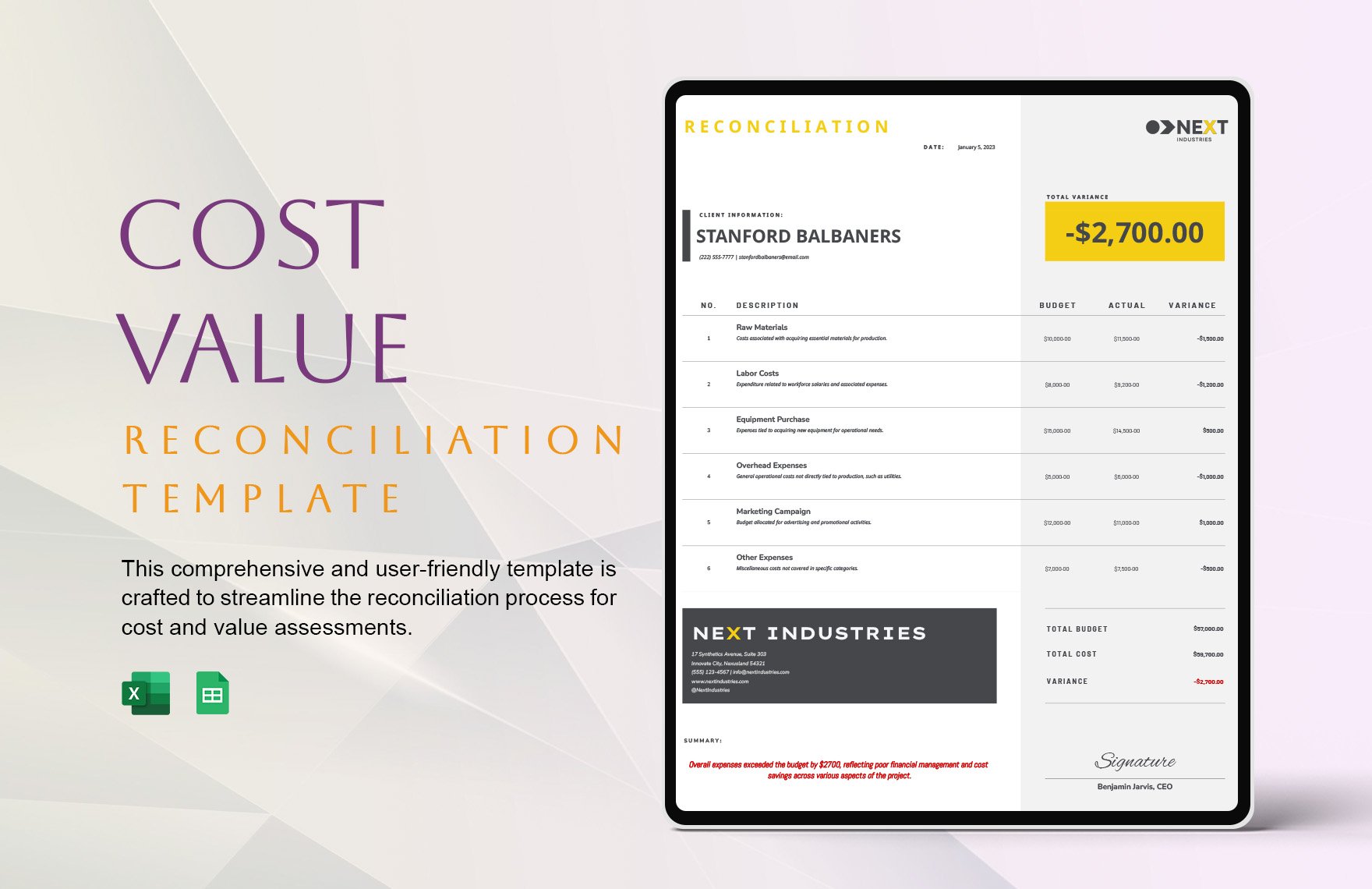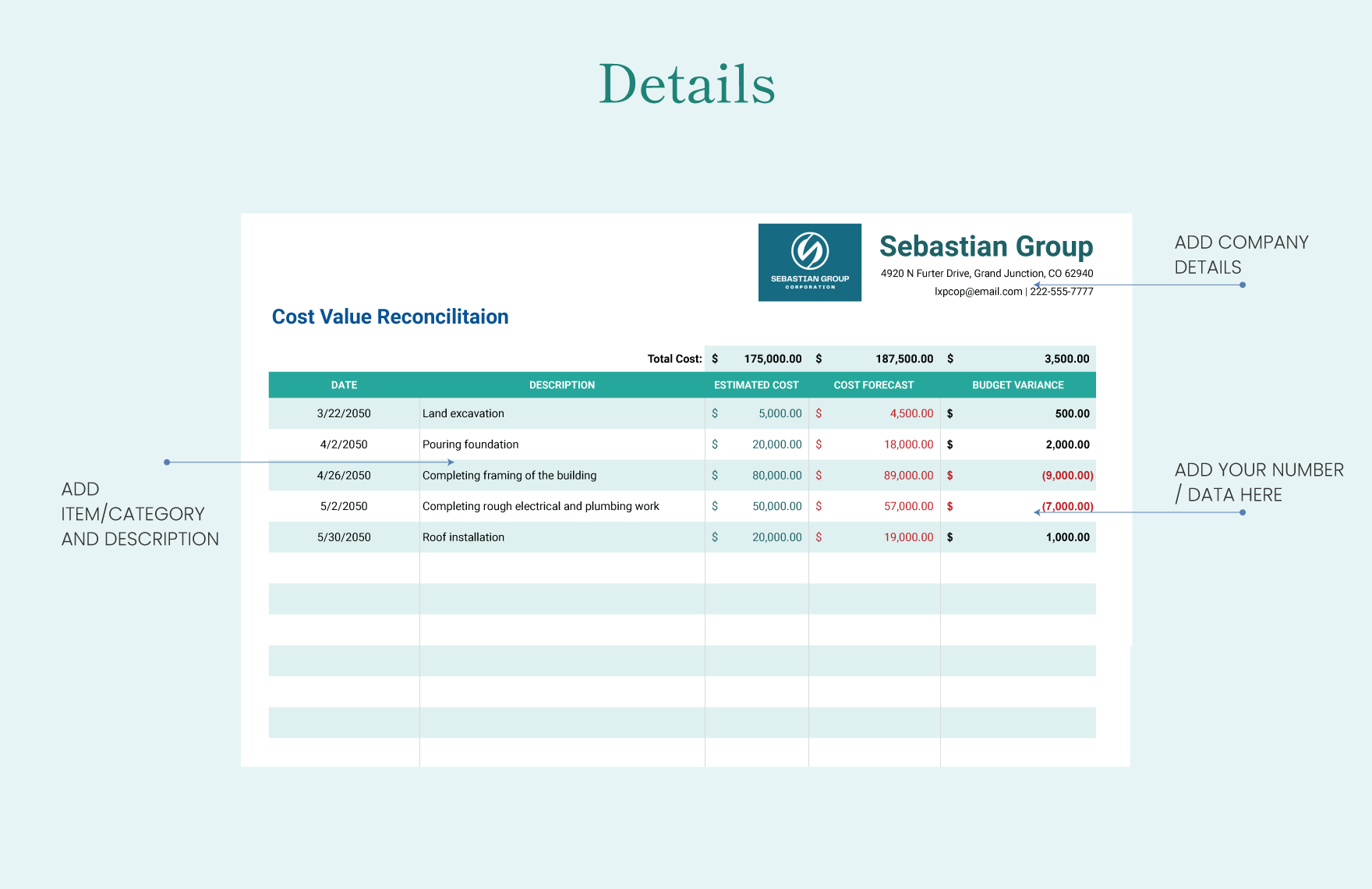The Free Cost Value Reconciliation Template in Excel You’ll Ever Need
Managing project finances can feel like navigating a maze. Keeping track of costs, comparing them to earned value, and understanding variances can quickly become overwhelming. This is where a robust Cost Value Reconciliation (CVR) process comes in. And thankfully, you don’t need expensive software to get started. This article provides you with a free, downloadable, and highly effective Cost Value Reconciliation template in Excel, designed to simplify your project financial tracking and analysis.
This template is your key to unlocking clarity and control over your project’s financial health. It helps you answer critical questions like: Are we spending too much? Are we delivering the planned value? What adjustments are needed to stay on track? Let’s delve into the benefits and how to utilize this powerful tool.
Why You Need a Cost Value Reconciliation Template
Before we get to the template itself, let’s understand why a CVR process is so crucial for successful project management:
- Improved Financial Visibility: Gain a clear picture of your project’s costs, earned value, and variances.
- Early Issue Detection: Identify cost overruns, schedule delays, and performance issues early on, allowing for timely corrective actions.
- Enhanced Decision-Making: Provide data-driven insights for informed decisions regarding resource allocation, budget adjustments, and project scope.
- Better Stakeholder Reporting: Generate clear and concise reports to communicate project status and financial performance to stakeholders.
- Simplified Reporting: Eliminate manual calculations and streamline the process of generating CVR reports.
Key Features of the Free Excel CVR Template
Our free Excel template is designed to be user-friendly and comprehensive. It includes the following key features:
- Cost Tracking: Clearly define and track all project costs, including labor, materials, equipment, and other expenses.
- Earned Value Management (EVM) Calculations: Automatically calculates key EVM metrics, such as:
- Planned Value (PV): The budgeted cost of work scheduled.
- Actual Cost (AC): The actual cost incurred for work performed.
- Earned Value (EV): The budgeted cost of work performed.
- Cost Variance (CV): EV - AC (Indicates whether you’re under or over budget).
- Schedule Variance (SV): EV - PV (Indicates whether you’re ahead or behind schedule).
- Cost Performance Index (CPI): EV / AC (Measures cost efficiency).
- Schedule Performance Index (SPI): EV / PV (Measures schedule efficiency).
- Variance Analysis: Provides clear visualizations of variances to highlight areas of concern.
- Flexible Design: Easily customizable to adapt to your project’s specific needs and reporting requirements.
- Downloadable & Free: The template is completely free to download and use.
(Insert a link here to download the free Excel CVR Template)
How to Use the Excel CVR Template: A Step-by-Step Guide
Using the template is straightforward. Here’s a simplified guide:
- Download and Open the Template: Access the template (link provided above) and open it in Microsoft Excel.
- Project Setup: Input the project name, start date, and other relevant project details.
- Cost Breakdown Structure (CBS): Define your cost categories (e.g., Labor, Materials, Subcontractors) to categorize your expenses. This helps in organizing and understanding the costs associated with each part of the project.
- Budgeted Cost of Work Scheduled (BCWS - PV): Enter the planned budget for each work package or activity. These values are your planned costs, as per your project plan.
- Actual Cost of Work Performed (ACWP - AC): Record the actual costs incurred for each work package or activity.
- Earned Value (EV): Determine the percentage of work completed for each work package and calculate the earned value based on the BCWS.
- Review and Analyze: The template will automatically calculate the EVM metrics and provide insights into your project’s financial performance.
- Generate Reports: Utilize the data to generate reports and present findings to stakeholders.
Tips for Maximizing Your CVR Template
- Regular Updates: Update the template with actual costs and progress data regularly (e.g., weekly, bi-weekly, or monthly) to maintain accurate tracking.
- Consistency is Key: Ensure consistency in your cost categorization and data entry to avoid errors.
- Customize as Needed: Adapt the template to fit your specific project requirements. Add or remove rows, columns, or formulas as necessary.
- Visualizations: Utilize Excel’s charting capabilities to create visual representations of your data, such as cost variance charts and schedule performance charts.
- Training: Consider training team members on the use of the template to ensure everyone understands how to input data and interpret the results.
Conclusion: Take Control of Your Project Finances
This free Cost Value Reconciliation template in Excel is a powerful tool that empowers you to manage your project finances effectively. By implementing a CVR process, you gain valuable insights into your project’s performance, enabling you to make informed decisions and ensure project success. Download the template, follow the simple steps, and start taking control of your project’s financial health today!
Frequently Asked Questions (FAQs)
1. Is this template compatible with all versions of Excel?
The template is designed to be compatible with most modern versions of Microsoft Excel (2010 and later). However, some formatting or features may vary slightly depending on your specific Excel version.
2. Can I modify the template to include additional metrics or calculations?
Yes, the template is fully customizable. You can add or remove rows, columns, and formulas to suit your project’s specific needs.
3. How often should I update the template with new data?
The frequency of updates depends on the project’s size, complexity, and reporting requirements. We recommend updating the template regularly (e.g., weekly, bi-weekly, or monthly) to ensure accurate tracking and timely identification of potential issues.
4. What if I don’t understand Earned Value Management (EVM)?
The template provides basic EVM calculations. You can find a wealth of resources online to learn more about EVM, including tutorials, articles, and online courses. The key is to understand the core concepts of PV, AC, and EV, and the template does the rest of the calculations.
5. Is the template secure?
The template itself is a standard Excel file and does not contain any macros or scripts that could pose a security risk. However, always exercise caution when downloading files from the internet and ensure you are downloading from a trusted source.
